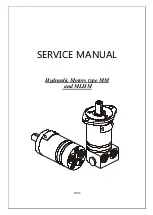
Note:
Do not restrict the air flow. Restriction of the air
flow can damage the fuel system. Perkins
discourages the use of all air flow restriction devices
such as radiator shutters. Restriction of the air flow
can result in the following: high exhaust
temperatures, power loss, excessive fan usage and
reduction in fuel economy.
A cab heater is beneficial in very cold weather. The
feed from the engine and the return lines from the cab
should be insulated in order to reduce heat loss to the
outside air.
Recommendation for Crankcase Breather
Protection
Crankcase ventilation gases contain a large quantity
of water vapor. This water vapor can freeze in cold
ambient conditions and can plug or damage the
crankcase ventilation system. If the engine is
operated in temperatures below −25° C (−13° F),
measures must be taken to prevent freezing and
plugging of the breather system. An open breather
system will operate more effectively in temperatures
below −25° C (−13° F). In extreme weather
conditions insulating the breather hose will help to
protect the system.
Consult with your Perkins dealer or your Perkins
distributer for the recommended breather
components for operation from −25° to -40°C
(−13° to -72.°F).
i02685960
Fuel and the Effect from Cold
Weather
Note:
Only use grades of fuel that are recommended
by Perkins . Refer to this Operation and Maintenance
Manual, “Fluid Recommendations”.
The following components provide a means of
minimizing problems in cold weather:
• Glow plugs (if equipped)
• Engine coolant heaters, which may be an OEM
option
• Fuel heaters, which may be an OEM option
• Fuel line insulation, which may be an OEM option
The cloud point is a temperature that allows wax
crystals to form in the fuel. These crystals can cause
the fuel filters to plug.
The pour point is the temperature when diesel fuel will
thicken. The diesel fuel becomes more resistant to
flow through fuel lines, fuel filters,and fuel pumps.
Be aware of these facts when diesel fuel is
purchased. Consider the average ambient air
temperature for the engine's application. Engines that
are fueled in one climate may not operate well if the
engines are moved to another climate. Problems can
result due to changes in temperature.
Before troubleshooting for low power or for poor
performance in the winter, check the fuel for waxing.
Low temperature fuels may be available for engine
operation at temperatures below 0 °C (32 °F). These
fuels limit the formation of wax in the fuel at low
temperatures.
For more information on cold weather operation, refer
to the Operation and Maintenance Manual, “Cold
Weather Operation and Fuel Related Components in
Cold Weather”.
i02323237
Fuel Related Components in
Cold Weather
Fuel Tanks
Condensation can form in partially filled fuel tanks.
Top off the fuel tanks after you operate the engine.
Fuel tanks should contain some provision for draining
water and sediment from the bottom of the tanks.
Some fuel tanks use supply pipes that allow water
and sediment to settle below the end of the fuel
supply pipe.
Some fuel tanks use supply lines that take fuel
directly from the bottom of the tank. If the engine is
equipped with this system, regular maintenance of
the fuel system filter is important.
Drain the water and sediment from any fuel storage
tank at the following intervals: weekly, service
intervals and refueling of the fuel tank. This will help
prevent water and/or sediment from being pumped
from the fuel storage tank and into the engine fuel
tank.
Fuel Filters
A primary fuel filter is installed between the fuel tank
and the engine fuel inlet. After you change the fuel
filter, always prime the fuel system in order to remove
air bubbles from the fuel system. Refer to the
Operation and Maintenance Manual in the
Maintenance Section for more information on priming
the fuel system.
The location of a primary fuel filter is important in cold
weather operation. The primary fuel filter and the fuel
supply line are the most common components that
are affected by cold fuel.
48
SEBU8731
Cold Weather Operation
Fuel and the Effect from Cold Weather
















































